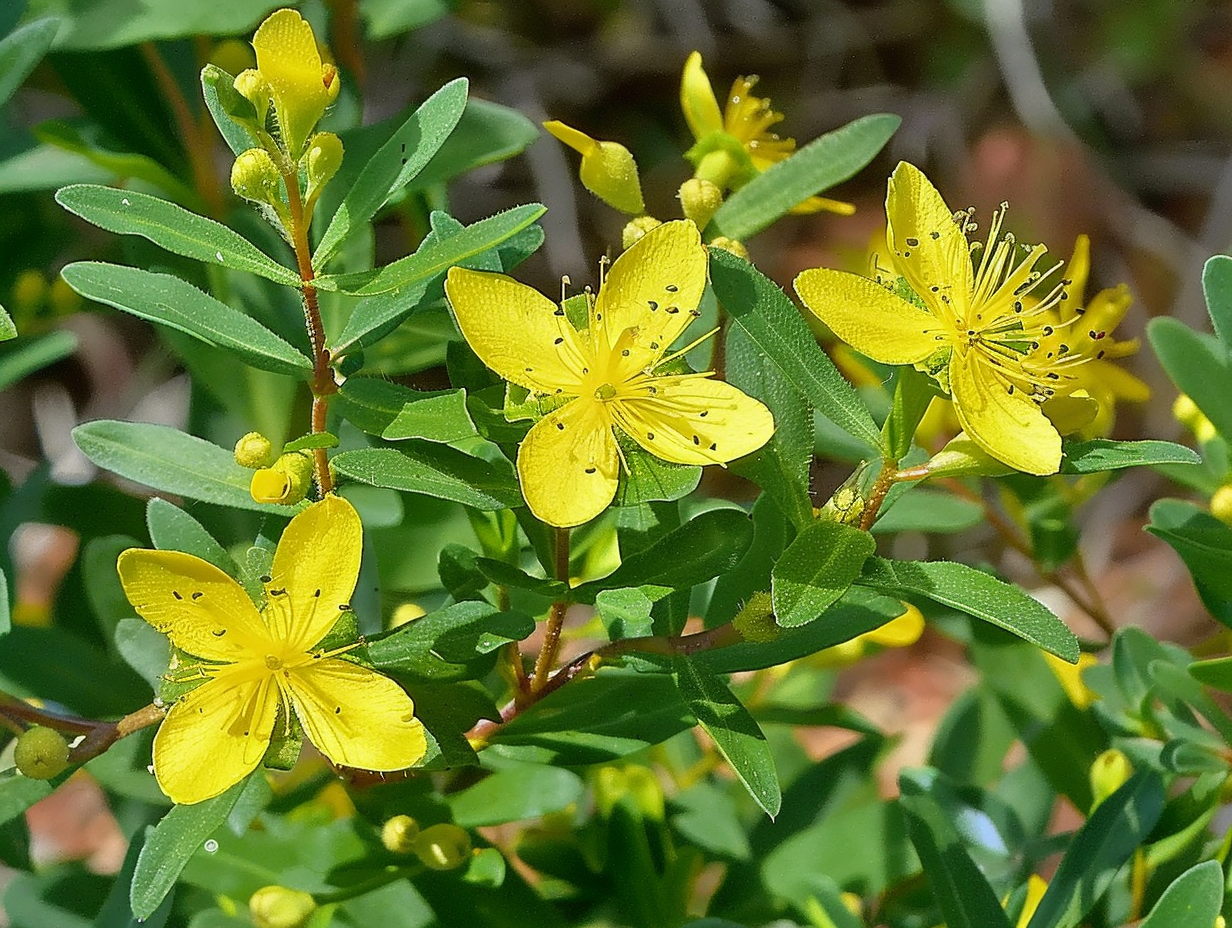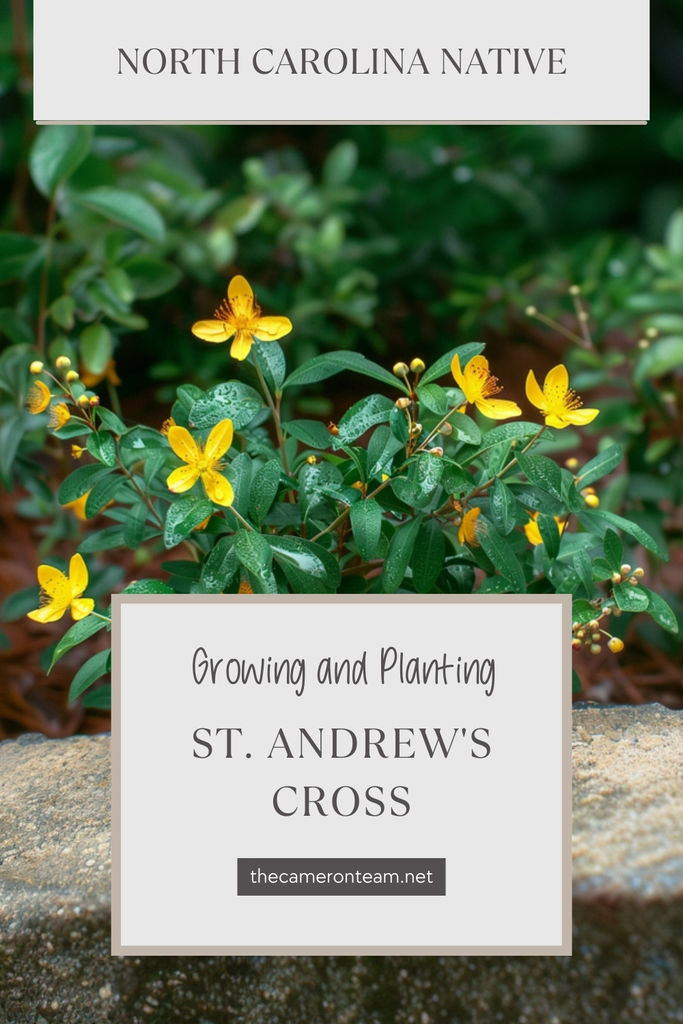St. Andrew’s Cross, scientifically known as Hypericum hypericoides, is a fascinating yet often overlooked Coastal North Carolina native plant. With its bright yellow flowers and unique growth habits, it brings both beauty and ecological benefits to any garden. Let’s delve into the history, optimal growing conditions, propagation techniques, and myriad benefits of this charming plant.
Please note: The Cameron Team has not been paid or received any other compensation to include any of the products featured on this post, but the author has included affiliate links and content. If you click on a link, they may earn a commission – a high-five for great content!
History of St. Andrew’s Cross
The name “St. Andrew’s Cross” comes from the distinctive X-shaped arrangement of its petals, reminiscent of the cross associated with Saint Andrew, the patron saint of Scotland. Historically, this plant has been part of the diverse flora of North America, thriving in various habitats from dry, sandy soils to moist, open woods. It has been used in traditional medicine by Indigenous peoples for its potential healing properties.
Optimal Growing Conditions
St. Andrew’s Cross is a versatile plant that adapts well to different environments, but it has specific preferences that will help it thrive:
- Soil: Prefers well-drained, sandy, or loamy soils. It can tolerate poor soil conditions but performs best in nutrient-rich environments.
- Sunlight: Thrives in full sun to partial shade. Too much shade can reduce flowering.
- Watering: While it’s drought-tolerant once established, regular watering during dry spells helps maintain its lush appearance.
- Climate: Best suited for USDA hardiness zones 6-9, which is why it grow so well in Coast North Carolina (zones 8a and 8b).
How to Propagate St. Andrew’s Cross
Propagating St. Andrew’s Cross is relatively straightforward, ensuring you can enjoy more of these beautiful plants in your garden:
- Seeds: Collect seeds from mature plants in late summer or early fall (you can also buy some on Etsy). Sow them directly in the ground after the threat of frost is gone in the spring or start them early indoors. Lightly cover with soil and keep moist until germination, but be patient. Germination can take 1 to 3 months.
- Cuttings: Take softwood cuttings in late spring or early summer. Dip the cut end in rooting hormone and plant in a potting mix. Keep the soil moist and place the cutting in indirect sunlight until roots develop.
- Division: In early spring or late fall, divide established plants. Carefully dig up the plant, separate the roots, and replant the divisions in the desired location.
Benefits of St. Andrew’s Cross
St. Andrew’s Cross offers numerous advantages, making it a valuable addition to any landscape.
- Attracts Pollinators: The bright yellow flowers are a magnet for bees, butterflies, and other pollinating insects, playing a crucial role in supporting local ecosystems. By planting St. Andrew’s Cross, you’re not only beautifying your garden but also contributing to the health and diversity of your local environment.
- Low Maintenance: Once established, St. Andrew’s Cross is remarkably easy to care for. It requires minimal watering, can tolerate poor soil conditions, and is generally resistant to pests and diseases. This makes it an ideal choice for gardeners of all experience levels, especially those looking for a hardy plant that doesn’t need constant attention.
- Erosion Control: Its robust root system helps stabilize soil, making it a great choice for planting on slopes and embankments. This quality is particularly beneficial in preventing soil erosion, which can be a major issue in certain landscapes. By incorporating this plant into your garden, you’re helping to maintain soil integrity and promote a healthier environment.
- Aesthetic Appeal: The striking yellow flowers and dense, green foliage provide visual interest throughout the growing season. Its unique petal arrangement and vibrant color can add a touch of elegance and charm to any garden setting, making it a favorite among gardeners who appreciate both beauty and function.
- Medicinal Uses: Indigenous peoples have utilized this plant for its anti-inflammatory and antiseptic qualities. While modern medicinal use should be approached with caution and professional guidance, it’s fascinating to acknowledge the historical significance and potential health benefits associated with this native plant.
Wrapping Up
St. Andrew’s Cross (Hypericum hypericoides) is more than just a pretty plant; it’s a resilient and beneficial addition to any garden. By understanding its history, growing preferences, and propagation techniques, you can enjoy the beauty and ecological benefits this native plant offers. Whether you’re a seasoned gardener or a novice looking to enhance your garden’s biodiversity, St. Andrew’s Cross is a gem worth discovering and nurturing.





